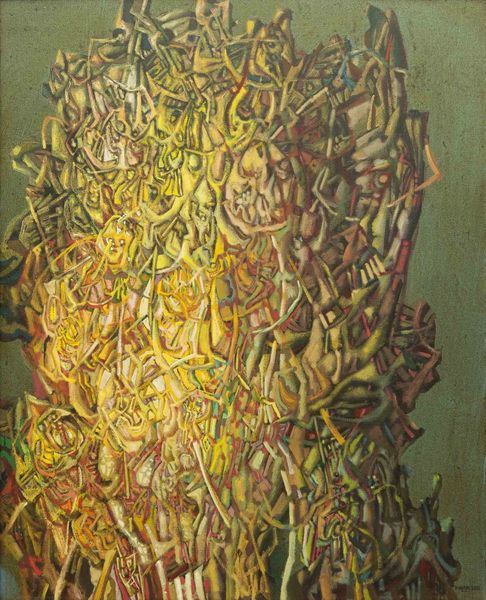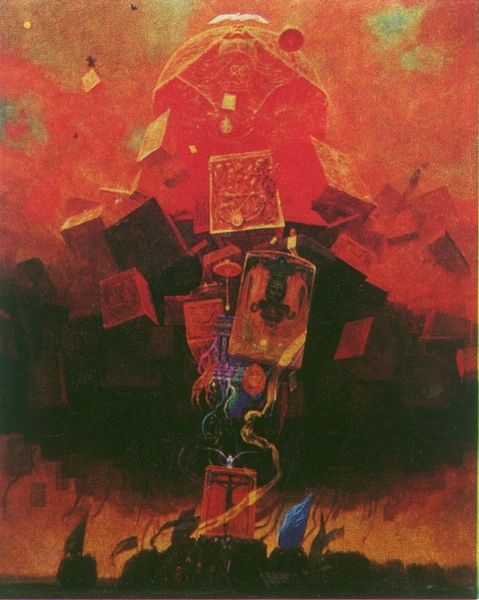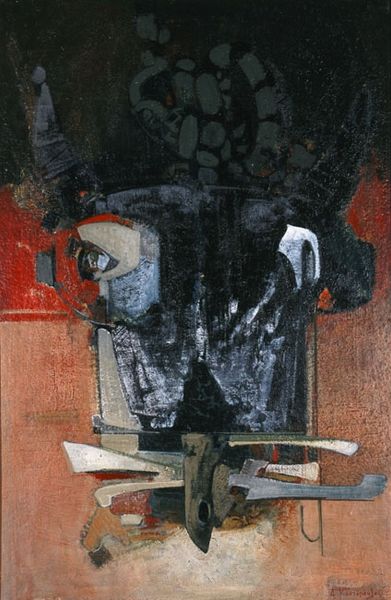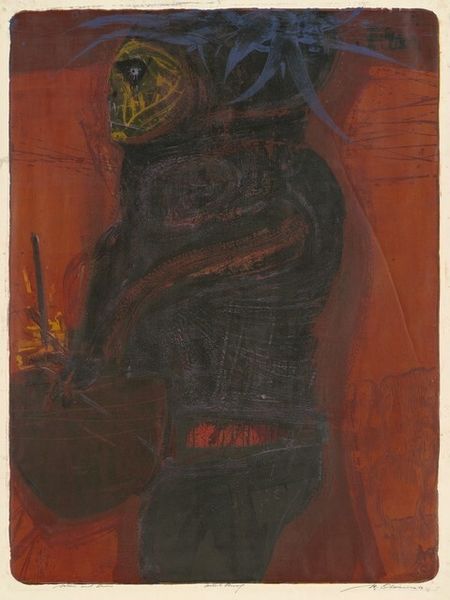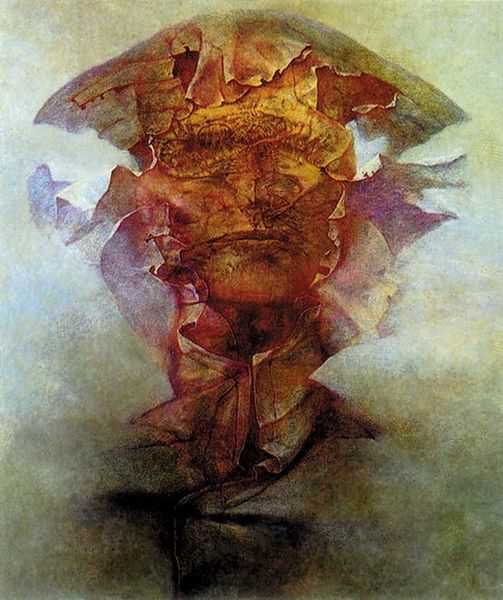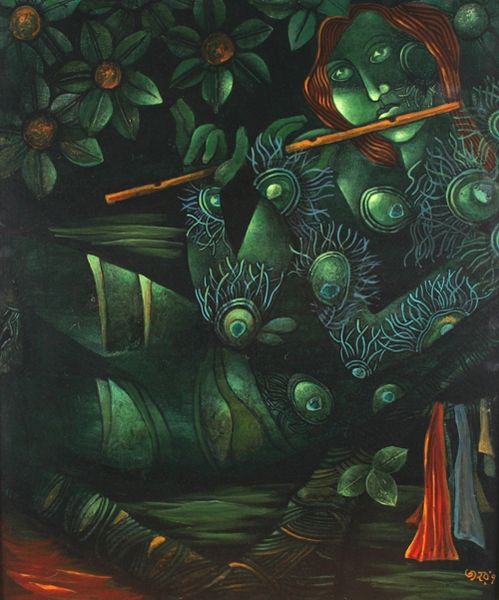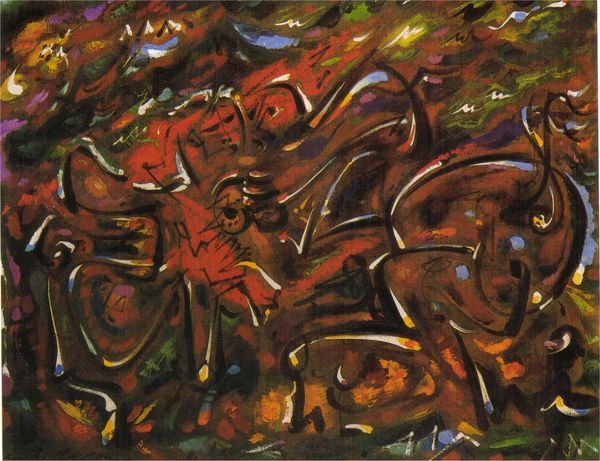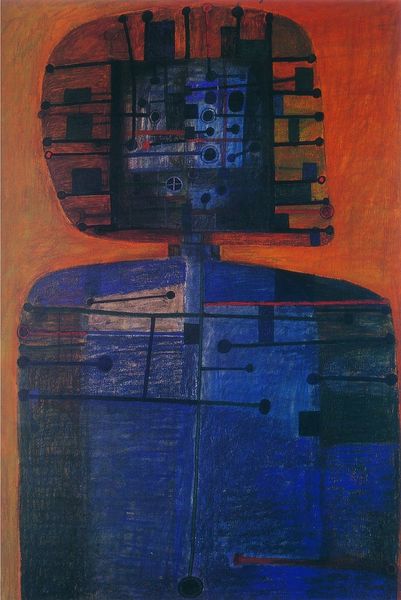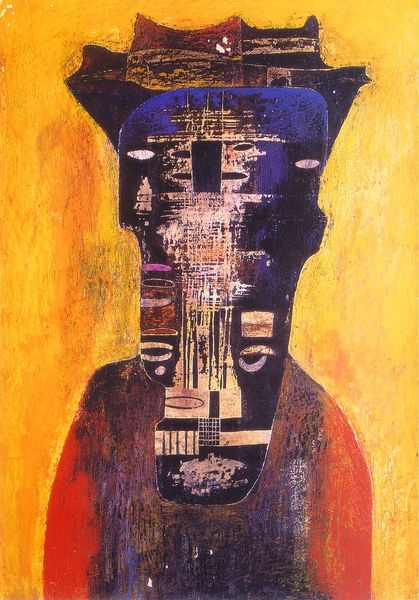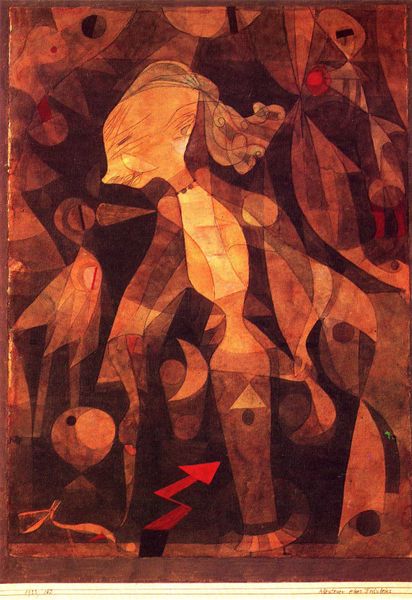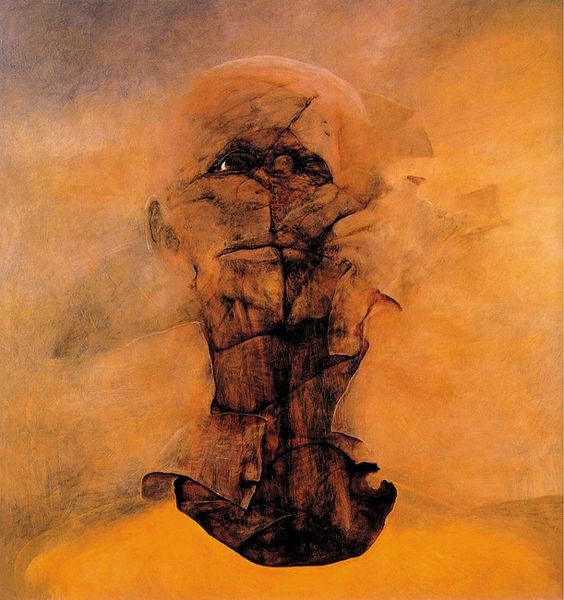
Copyright: Ernst Fuchs,Fair Use
Editor: So, this is Ernst Fuchs's "Cherub with the Cross of Jerusalem," painted in 1962. I'm struck by its otherworldly, almost haunting presence. What symbols or deeper meanings do you see embedded within this artwork? Curator: This painting is saturated with symbols. The cherub, usually a symbol of innocence, is depicted with an almost archaic, weighty crown – like a relic, not a decoration. Does the Hebrew writing on the paper pinned at the bottom ground you, or intensify the dreamlike state? Editor: Intensify, I think. It’s like a layer I can’t quite decipher, adding to the mystery. Curator: Exactly. And the Cross of Jerusalem below. It roots the work in place, yes, but also in historical struggles. Look at how these symbols interplay with Fuchs's surrealist style, blending dream and reality. How does the vibrant yet muddied color palette contribute? Editor: It feels both ancient and futuristic, like a memory from a civilization that never existed. The colors lend to a somber but intense mood. Almost like looking at an alien, long forgotten deity. Curator: That tension is key. Fuchs masterfully uses surrealism to explore cultural memory. This isn't just about religious symbolism; it's about the weight of history, tradition, and the persistence of symbols across time. Editor: So, he's not just illustrating, he's investigating the emotional and cultural impact of these symbols. Curator: Precisely. This painting invites us to contemplate how images shape our understanding of the past and, perhaps, our present. What does it mean to carry the Cross, the Torah, or the relics of culture? This picture dares you to think about such things, no? Editor: Absolutely! It’s a dense, challenging work. Thanks for illuminating some of its many layers. Curator: It’s a delight to unpack a painting’s visual language together. I learn more with conversation.
Comments
No comments
Be the first to comment and join the conversation on the ultimate creative platform.
